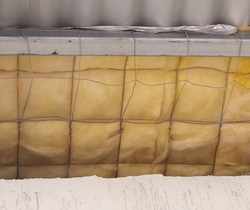 |
|||||||
Roof InsulationRoof insulation and energy efficiency are getting more and more attention in modern house building.If you wish to build a new house, in any part of the world that has fairly stiff building regulations, you have to consider energy conservation from the outset. The regulators have taken the choice away from homeowners and builders, as to whether to build energy efficiently or not. This has come about recently because of the energy crisis. We are reminded of it every time we fuel up our cars. Every time we have to pay our energy bills for heating or cooling our homes. Houses have been built with various forms of energy efficient construction for a long time now, the technology has been around for a while, but whereas it used to be a matter choice, on the owner's part, whether to take on the extra up front cost in the construction process in the hope of it paying off in the long run, now it has been taken out of our hands. We have to do it. Where I live in Northern Australia, I cannot submit a set of drawings for a new house without detailing how I plan to achieve efficient energy conservation. I have to give specific details of the materials used and their "R" values. The term R Value is used by industry to describe the insulating properties of materials. Every wall floor or roof insulation product has an approved R value rating.
In my part of the world, our regulations will state the minimum R values to be achieved by the roof, the walls, the floor and wall openings. These will vary, depending on geographic location, the actual orientation of the house etc. For instance, where I am we have different targets for East-West walls (receive more sun) than North - South walls.
Improving the Roof Insulation of existing roof spaces.A quick Google search will reveal many companies that specialise in placing roof insulation inside your roof space, to make your home more energy efficient.
Spray Foam InsulationThis is another option that can be used to improve the insulation properties of roofs and walls. A lady who knows all about it has an excellent page here. In fact the whole site is my sort of website, tons of good photographs. A final thought for DIY-ers. Roof spaces can get very hot at times. A few years ago we were building an extension to a house, and the owner mentioned to me that he was going into the roof to run an electrical wire.About half an hour or so later It occurred to me that I hadn't heard Monty moving around for a while. To cut a long story short he had passed out through heat stroke. If we hadn't been there he could very well have died. So, I do not EVER go up into a roof space without either having an offsider working with me, or at least someone in the house, that knows I am up there. Not found it yet? Try this FAST SITE SEARCH or the whole web |
Hire Equipment  Furniture Fittings - Architectural Hardware - Electronic Locking Systems - Technical Hardware BuilderBill sponsorship Quick Illustrated Roofing Glossary Pages.Types of roofsRoof Features Roof Framing Roof Trusses Roof Coverings In Depth Roofing Articles
|
||||||
|
|
|||||||
|
Please Note! The information on this site is offered as a guide only! When we are talking about areas where building regulations or safety regulations could exist,the information here could be wrong for your area. It could be out of date! Regulations breed faster than rabbits! You must check your own local conditions. Copyright © Bill Bradley 2007-2012. All rights reserved. |
|||||||

